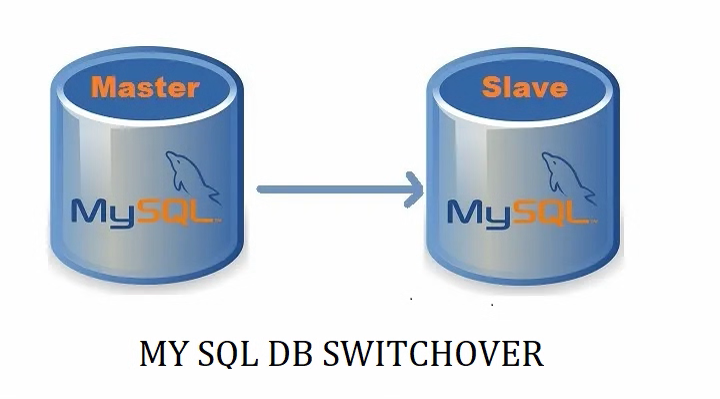
INTRODUCTION:
This doc will guide you through the process of performing a MySQL replication switchover, ensuring a smooth transition without any data loss. Let’s dive into the step-by-step instructions.
Step 1. Check replication in MySQL Slave:
Use below command to check show slave status & show master status to check for the status of lag and for any error in replication.
ON PRIMARY
============
mysql -u root -pTEST_MAST1$ show master status \G; check log position both Master and Slave. (If Both are same then proceed with below) systemctl stop mysqld
ON STANDBY
============
mysql -u root -pTEST_SLAVE$ show slave status \G; check log position both Master and Slave. (If Both are same then proceed) systemctl stop mysqld
STEP 2: Make Master Read only and change below mentioned entry in .conf file
take the backup (my config file)
mysql> set persist read_only=ON; Query OK, 0 rows affected (0.07 sec) --disable log_file. (#log_file) in .conf file systemctl start mysqld reset master; reset slave;
STEP 3: Make Slave Read and Write and change below mentioned entry in .conf file
take the backup (my config file)
--disable read_only file (#read_only=1). --enable log_file. systemctl start mysqld Reset master; reset slave; stop slave;
STEP 4: Perform the below steps in old-master and update it with new-master information and start slave.
stop slave; CHANGE MASTER TO MASTER_HOST='current master (TEST_SLAVE) host’, MASTER_USER='replication',MASTER_PASSWORD='replication',MASTER_PORT=xxxx, MASTER_LOG_FILE='current master(STANDBY01) log file name',MASTER_LOG_POS=123;
Start slave; CHANGE MASTER TO MASTER_HOST='xxx.xxx.xx.xx',MASTER_USER='replication',MASTER_PASSWORD='xxxxxx',MASTER_PORT=xxx, MASTER_LOG_FILE='xxxxxxxx',MASTER_LOG_POS=123;
Conclusion:
Performing a MySQL replication switchover involves careful coordination between the current master and slave servers. By following the step-by-step instructions provided in this guide, you can ensure a smooth transition without losing any data.
Recent Posts
